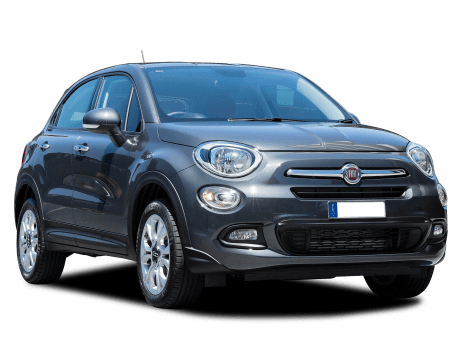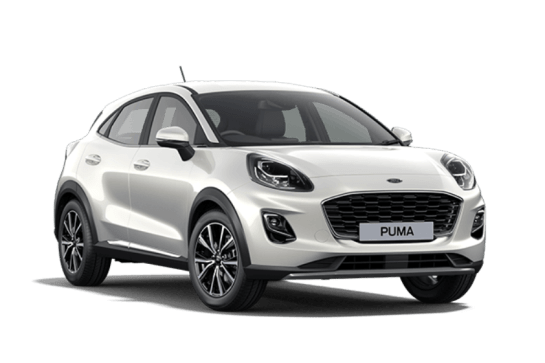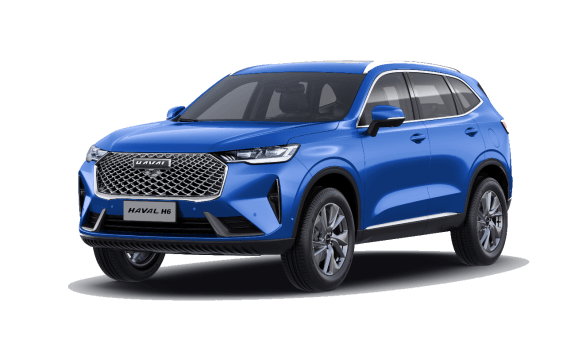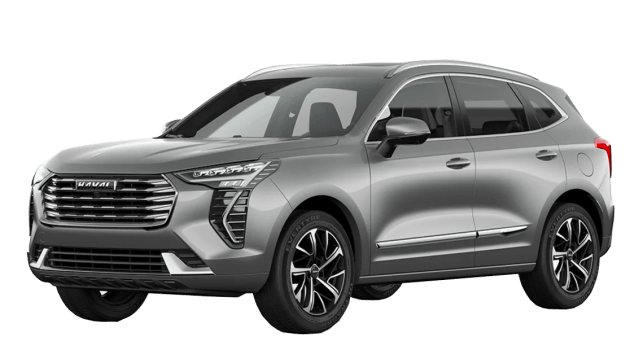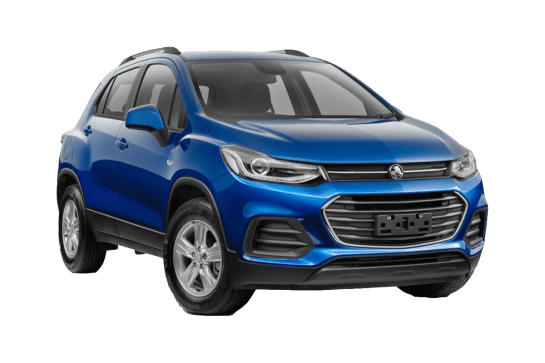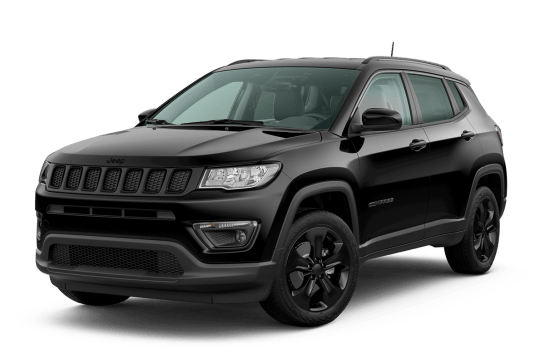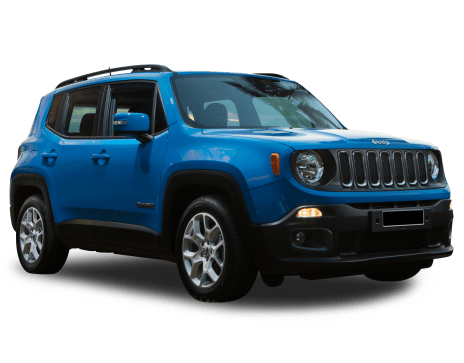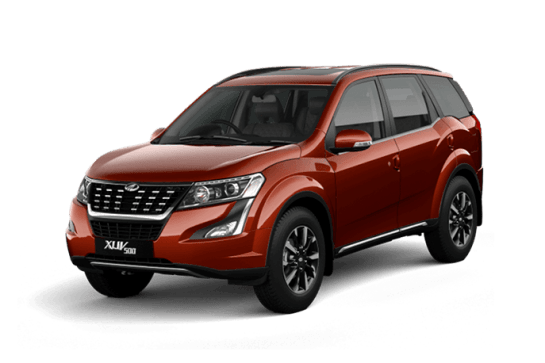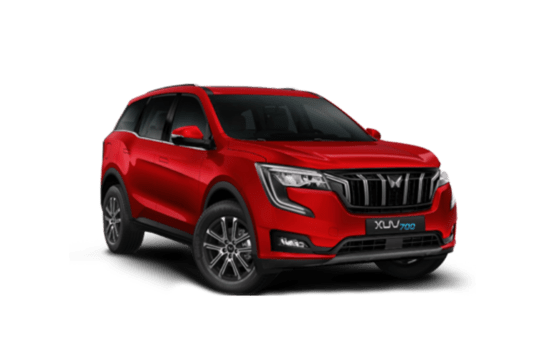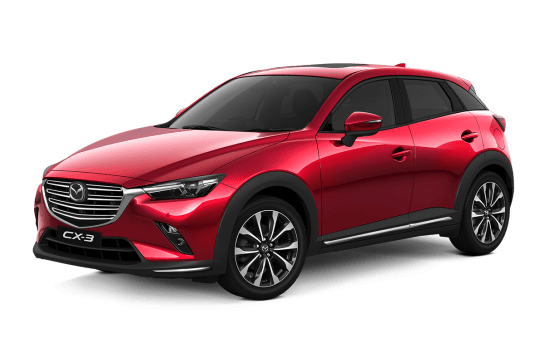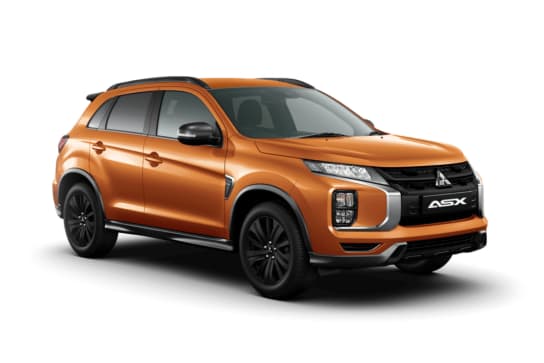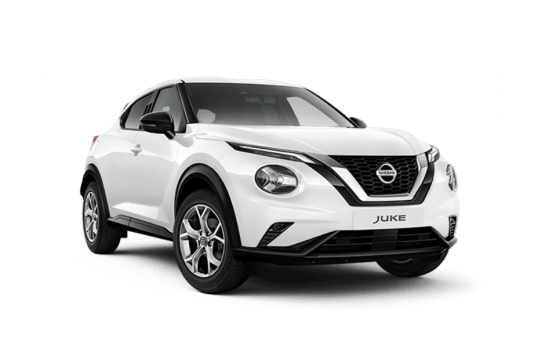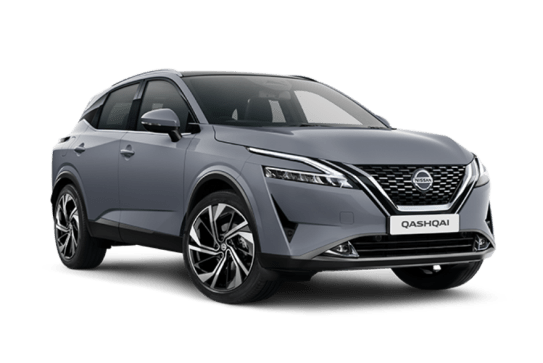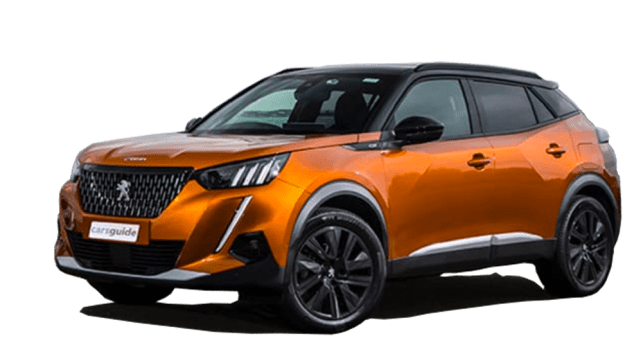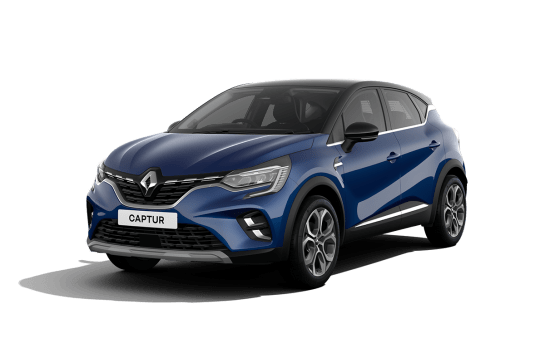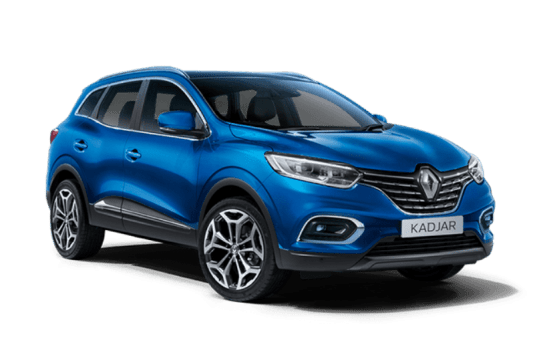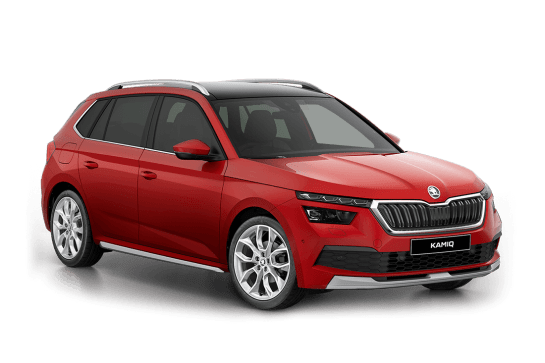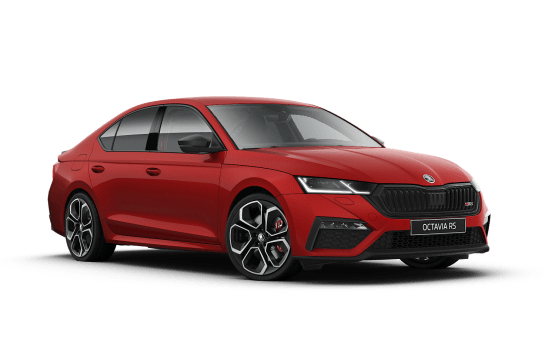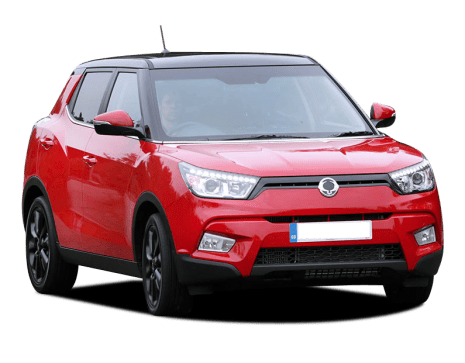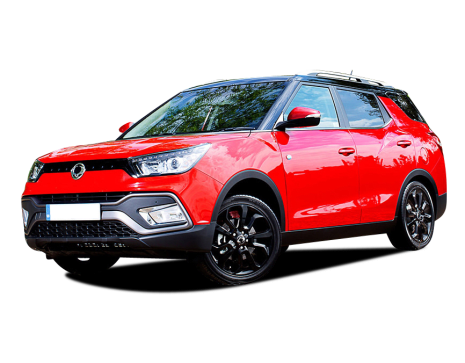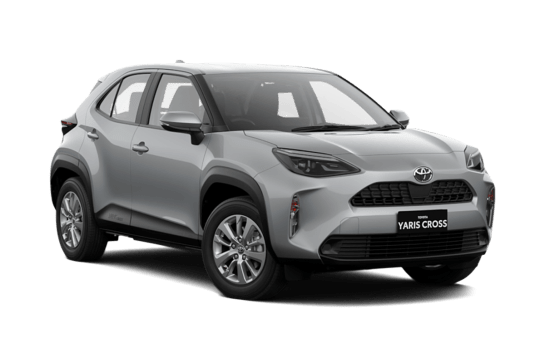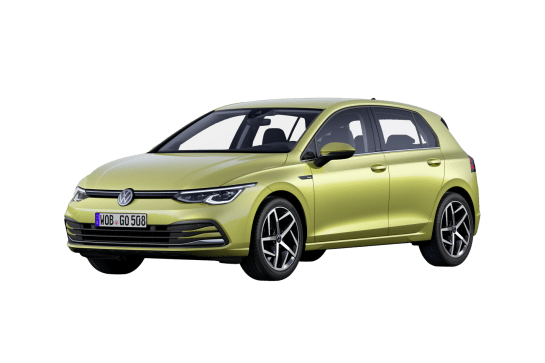
Honda CR-V VS Mini Countryman
Honda CR-V
Likes
- Exceptional value for money
- Superb engineering
- Excellent family-focused packaging
Dislikes
- No full-sized spare wheel
- No hybrid AWD availability
- Firm ride
Mini Countryman
Likes
- Cute styling inside and out
- Responsive engine
- Practical
Dislikes
- High urban fuel consumption
- Visibility restricted while driving
- No shifting paddles
Summary
Honda CR-V
In the distant future, automotive historians will look back at the Honda CR-V as one of the true SUV originals.
Sure, it and the conceptually-identical Subaru Forester, trailed the trendsetting Toyota RAV4 of 1994 by three years, but collectively all three Japanese brands broke and then reset the Australian family-car mould in lightning-quick time. Too much so for the floundering local car industry to ever catch up.
Today, they remain the blue-chip mid-sized SUV contenders.
Six generations in, how does the completely-redesigned CR-V in all-new e:HEV (petrol-electric hybrid) guise stack up? Let's find out!
Read more about
- Honda CR-V 2024 review: VTi L7
- Will Honda Australia Elevate its number of SUVs with the 2024 WR-V to compete against the Mazda CX-3, Nissan Juke and Toyota Yaris Cross?
- Lots of Honda electric cars on the way including 2024 Prologue SUV and new sports car concept to be shown at Tokyo - but will Australia really continue to miss out?
| Safety rating | |
|---|---|
| Engine Type | 2.0L |
| Fuel Type | — |
| Fuel Efficiency | 5.5L/100km |
| Seating | 5 seats |
Mini Countryman
The Countryman is Mini’s SUV and the new-generation model has grown in size making it the biggest Mini ever made. But even then it’s still a small SUV.
We’ve tested the Countryman S All4 in the Favoured grade to find out if it could be the ideal urban little SUV.
In this review we rate the Countryman S All4 Favoured for what it’s like to drive and how fuel efficient it is, how practical and spacious the cabin is for people and their stuff, check out the safety equipment, list its features and weigh up the value-for-money.
Read more about
- Mini Countryman 2024 review: Electric
- Mini confirms 2024 Aceman electric SUV for Australia: Pint-sized Chinese-built EV on the way as a premium alternative to BYD Atto 3 and MG4
- Why there will be no EV version of the 2025 Mini Cooper five-door, and how the Aceman electric SUV could become the brand's global top-seller
| Safety rating | — |
|---|---|
| Engine Type | 2.0L |
| Fuel Type | Pulp |
| Fuel Efficiency | 7.6L/100km |
| Seating | 5 seats |
Verdict
Honda CR-V8.5/10
The most-expensive version of the latest Honda CR-V is one of the most convincing family-orientated mid-sized SUVs in Australia, regardless of price and positioning.
For efficiency, economy, driveability, packaging, safety, quality, refinement and value-for-money, it is an outstanding value proposition. Don't buy a RAV4 or Forester hybrid before checking this one out.
We cannot wait for the e:HEV hybrid powertrain to filter down to cheaper grades, to make the best CR-V in decades even more accessible.
Mini Countryman8/10
The Mini Countryman S All4 Favoured is cute, practical, fun to drive, good value and has the latest safety tech. But its urban fuel consumption is high for a small SUV. If you are staying mainly in the city the electric Countryman might make this already excellent SUV just about perfect for you and your urban lifestyle.
Design
Honda CR-V
Though considered handsome, the CR-V has never been a style leader. Function over form has always been its calling card, and Number Six is no exception.
Cleanly drawn, with boxy proportions and a blunter, squarer nose providing a contemporary if somewhat bland appearance, the Thai-built Honda lives on the larger end of the mid-sized SUV scale, resulting in lots of space and practicality.
Yet there are interesting and worthwhile details to explore, like narrower-than-usual windscreen pillars for exceptional forward vision.
The same applies to the considered positioning of the exterior mirrors, minimising blind spots, while deep glass areas allow light to flood in.
The stylish, Volvo-esque L-shaped tail-light graphic probably connects most clearly with past CR-Vs, giving the latest version an elegant overall presence.
Compared to the old model, the latest version's wheelbase has been stretched by 40mm to 2700mm, while front and rear tracks are 10mm wider, coming in at 1611mm and 1627mm, respectively.
Note that the front-drive models' ground clearance is 198mm – 10mm less than on the (non-hybrid-only) AWD grades.
Mini Countryman
The Mini Countryman S Favoured’s design is so interesting it’s easier to make a list of things about it which aren’t interesting. The list: i) tyres, ii) windscreen wipers, iii) seat belts.
That’s pretty much it. I mean they’re interesting in that we can’t live without them but they're not cute like the headlights, pug-nosed bonnet, tiny windscreen and sad-faced grille.
Nor stunning like the cabin’s large central display. The first-ever circular OLED display in a car, by the way. And certainly not as intriguing as the way the interior door trim changes colour from the back to the front.
The Countryman S is all-wheel drive and Mini has given it a rugged look complete with All4 badging.
The Countryman S All4 comes in nine colours, ours is 'Smokey Green' and you can mix and match the colours with the roof and wing mirrors ('Vibrant Silver' on our car).
The test car's wheels are 20-inch alloy 'Windmill' design and although they aren’t the most intricate looking they're easy to clean.
Another interesting Countryman attribute is its size. This is the biggest Mini ever made at 4.44m long, 1.84m wide and 1.66m tall.
So, if you do decide to buy one be prepared for “not very mini, is it?” jokes delivered by unfunny people haunting petrol stations and shopping centre car parks.
Practicality
Honda CR-V
Little wonder the CR-V was the world's third most-bought SUV worldwide in 2023. It's big enough for most families' needs... and then some.
This is immediately apparent the moment the big doors are opened up nice and wide, revealing an airy, spacious and extremely user-friendly interior.
The Japanese brand has striven successfully for greater visual symmetry, harmony and operational simplicity in the dashboard's design and layout.
And, sure, the 9.0-inch touchscreen lacks the wow factor of vast buttonless displays as found in flashy alternatives such as the disappointing Chery Tiggo 7, but it works very effectively.
Hondas have always nailed the driving position bit down pat, and the RS is no exception, with ample seat and steering column adjustment, considered controls placements and unimpeded views of the instrumentation and road ahead due to the aforementioned thin pillars.
The instrumentation cluster is an electronic set-up offering the driver the choice of either super crisp and ultra-clear analogue dials, or somewhat fussier bar graphs, with a digital speedo augmenting both.
There's so much to enjoy and so little to criticise inside Honda's mid-sized SUV. Along with space to stretch, the front seats are notably comfortable and supportive, as several hundred kilometres sat ensconced in them proved. Both sides have electric adjustment at this price point, too.
Ventilation also rates highly, with the honeycomb full-dash-length grille and lovely toggle switches bringing aesthetic and tactile delight, respectively.
And, reflecting the CR-V's US focus, storage is on a large and helpful scale, offering bottle holders in the doors amongst other places to stash things in and on.
Moving to the rear seat area, entry/egress is ridiculously unimpeded, with a decently-shaped bench.
Families are also likely to appreciate series-best legroom, backed up by a handy amount of girth – always a good thing.
You're also met with occupant-facing air vents, overhead grab handles, even more door storage, the obligatory folding centre armrest with cupholders, front-seat-sited map pockets and a pair of USB-C outlets.
However, the standard sunroof does rob some headroom so people taller than about 180cm had better try before they ride, though the 60/40 backrest reclines to 16 positions and that's helpful here.
Being a hybrid, the RS e:HEV misses out on the sliding bench which adjusts by 190mm in other CR-Vs.
Vision out is exemplary back there, enhancing an already spacious and airy ambience. But if the front seat area majors on Japanese quality, the rear is hardly premium, with plenty of dreary cheap plastic trim, betraying the Honda SUV's focus on the price-driven American market. But nothing squeaked, rattled or broke, thankfully.
Further back, the tailgate rises remotely quickly enough, and there's quite a wide and long area to store things, but the electrification elements make for quite a high and uneven floor – though a deep bin area is also provided to hide stuff in.
There's also just a can of goo in lieu of a spare wheel.
Cargo capacity rises compared to the previous CR-V, ranging from 589 litres with the rear seats up, to 1636L, or 1072L if measured only to the window line.
Mini Countryman
The Countryman is Mini’s SUV and the brand has clearly attempted to make the interior feel rugged and practical with touches like hard wearing materials and grippy surfaces, plus clever storage.
There are big door pockets with moulded compartments, shelves under the dashboard, a covered area between the driver and front passenger and four cupholders.
There are plenty of power outlets, too, with four type-C USB ports, two 12V outlets and a wireless phone charger.
If you were wondering how roomy the Countryman is, don’t fear, there’s plenty of space up front even for me at 189cm with wide seats and good elbow room. Space in the back is excellent with plenty of legroom and headroom. All up there are five seats on board.
If you’re going to be using the rear doors for passengers a lot, take a look at the size of the opening. It’s small and getting in and out might be a problem for older and less flexible people.
As for cargo space the Countryman has a 505L boot with all seats upright.
The Countryman’s BMW X1 twin offers better practicality and space, but lacks the cute, quirky looks. Having lived with both cars it’s clear the X1 makes a better family car.
Something to keep in mind if you’re looking for better practicality for about the same price, size and performance.
Price and features
Honda CR-V
At the time of writing, choosing the hybrid version over the regular petrol-turbo CR-V means forking out for the top-of-the-line RS. Less expensive (and luxurious) hybrid grades are expected soon.
Starting from $59,900 drive-away, it isn't cheap, especially as its two closest rivals – the RAV4 Cruiser Hybrid and Nissan X-Trail Ti e-Power e4orce – offer all-wheel drive (AWD) for around the same price, while the Honda is front-wheel drive only.
At least the RS e:HEV isn't short on equipment, especially safety, with 11 airbags, Autonomous Emergency Braking (AEB), blind-spot alert, lane-keep assist, rear cross-traffic alert and adaptive cruise control included. Check out our safety section below for more details.
Being the CR-V flagship, you'll also find adaptive LED headlights, a panoramic sunroof, dual-zone climate control, leather upholstery, powered and heated front seats, a 9.0-inch touchscreen, sat-nav, wireless Apple CarPlay/wired Android Auto, Bose premium audio with 12 speakers, digital radio, a wireless charger, privacy glass, hands-free powered tailgate, roof rails, front and rear parking sensors and 19-inch alloys.
Note, however, there is no spare wheel, just a tyre-repair kit. Not good enough. For why, please see the Cost of Ownership/Warranty section.
There's also five years' free subscription to 'Honda Connect', bringing remote-control operation for climate control, lights and locking/unlocking, trip log data, location status, geo-fencing and emergency callout.
What's missing? Along with the aforementioned AWD, some rivals at this price point include larger alloy wheels if that's your thing.
Otherwise, the RS e:HEV brings plenty of features to the table. Sadly, not of the picnic variety, however, unlike in the first two generations of CR-V (1997 and 2001).
Mini Countryman
We have tested the Mini Countryman S All4 Favoured. In Mini-speak that means it sits in the middle of the Countryman line-up and it’s all-wheel drive. The list price is $61,990.
Coming standard are LED headlights, black roof rails, 20-inch alloy wheels, proximity unlocking, John Cooper Works seats, dual-zone climate control, heated power front seats, a heated sports steering wheel, a round OLED media display, a head-up display, sat nav, wireless Apple CarPlay and Android Auto, a 12-speaker Harman Kardon sound system and wireless phone charging. And by the way the interior colour which transitions from brown to blue is also standard on the Favoured.
The value is pretty good for what really is a prestige car and that means you’re comparing it to things like a Volvo XC40 and it’s not-so identical twin the BMW X1.
Under the bonnet
Honda CR-V
The CR-V hybrid is powered by a 2.0-litre four-cylinder direct-injection Atkinson Cycle petrol engine.
Married to a pair of electric motors that make a combined power output of 152kW, it delivers a system total of 135kW at between 5000rpm and 8000rpm, as well as an impressive 335Nm of torque from 0-2000rpm.
It sends drive to the front wheels via a single-speed electric continuously variable transmission (e-CVT), featuring deceleration paddles that help redirect regenerative braking energy back into the battery.
Tipping the scales at 1771kg (kerb), the power-to-weight ratio is 76.2kW/tonne. Not great, but the e:HEV's brawn lies in its hefty torque output.
Mini Countryman
The Mini Countryman S has a 2.0-litre, four-cylinder, turbo-petrol engine making 150kW and 300Nm - the same one powering the BMW X1.
This is a more powerful engine than the three-cylinder found in entry-grade Countryman C, but doesn’t have the grunt of the more hardcore Countryman JCW that sits above it in the range.
A seven-speed dual-clutch automatic flips through gears quickly and smoothly. If only there were shifting paddles on the Countryman S so the driver could be a bit more involved.
As mentioned earlier the Countryman S is all-wheel drive which is great for extra traction but doesn’t make this little SUV a capable off-roader, so keep your adventures no wilder than dirt or gravel roads that aren’t too challenging.
Efficiency
Honda CR-V
Like Toyota's hybrids, Honda's do not need to be plugged in; the small 1.06kWh lithium-ion battery fitted is charged by either the engine or via regenerative braking energy.
Honda says the e:HEV RS on the Urban, Extra Urban and Combined cycles should average 4.9, 5.8 and 5.5 litres per 100km, respectively. The latter figure equates to a carbon dioxide emissions rating average of 125 grams/km.
Fitted with a 57L fuel tank, that means the driver can expect to achieve about 1035km between refills – and on 91 RON regular unleaded petrol at that.
Out in the real world, we managed a still-laudable 6.5L/100km during our time with the RS e:HEV, achieved through a mixture of inner-urban and open-road driving.
Mini Countryman
Mini says the Countryman S should use 7.6L/100km of premium unleaded petrol after a combination of open and urban roads, but also says if you’re driving is restricted to just the city consumption will jump to 9.9L/100km. Our own testing was mainly urban and we measured 11.2L/100km at the fuel pump.
Thanks to a 45-litre tank, driving range between fills is around 450km using the official consumption figure and just over 400km using our real-world average.
The relatively heavy fuel consumption is a weakness in the Countryman S’s urban suitability. The three-cylinder Countryman C is more fuel efficient but the electric Countryman E is a much better alternative and only costs about $5000 more than our test car.
Driving
Honda CR-V
If the good-looking e:HEV RS's compelling value and great interior don't convince, then the driving experience might.
Building on five generations of gradual evolution, the latest CR-V uses an updated version of the previous model's all-new architecture – a very solid foundation to build an SUV upon.
Pairing that with Honda's latest hybrid electrification tech is the automotive equivalent of putting together peaches and cream. Even to a vegan.
From the first push of the starter button, the driving experience is seamless, elevating the e:HEV to the premium realm.
As it's in EV mode for much of the time at lower speeds, the SUV powers forward quickly and effortlessly, gliding along with a determined hum.
When the petrol engine eventually engages, it does so smoothly and quietly, yet the electric motor's influence and effects are far from done; the driver can sense all that torque (335Nm, remember) just from the immediacy of the throttle response.
Result? The CR-V's mid-range thrust makes it a deceptively rapid vehicle, accelerating instantly and surging strongly in almost no time at all. Keep an eye on that speedo, too, because the powertrain delivery is silken.
Furthermore, and going against type, the brakes thankfully avoid the wooden feel of many rival hybrids, and instead pull up immediately and with normal and natural pedal pressure.
Additionally, the paddle shifters provide variable off-throttle braking, though not quite down to a full stop.
Honda's chassis engineers have earned their keep when it comes to the CR-V's dynamics, too.
Light and easy around town for painless parking, the steering weights up nicely at higher speeds, allowing the driver to get into a linear rhythm with the machine, and without it feeling nervous or top-heavy when corners get tight – a rarity in an electrified SUV of this size.
And while it lacks the intimate connection of sportier SUVs like the Mazda CX-5 (given the RS badges), most people will appreciate the Honda's calm and controlled handling and road holding.
For the record, suspension in the CR-V consists of MacPherson-style struts up front and a multi-link rear end. However, a bit more suppleness would transform the e:HEV.
Wearing 235/55 R19 tyres, its ride around town is fine over larger bumps, absorbing them smoothly and without fuss, while overall tyre/road noise intrusion is pretty good, too.
Yet smaller-frequency surface irregularities, like joins and rail tracks, are not so easily dealt with, resulting in some sudden harshness.
Driven over exactly the same roads as the ZR-V e:HEV equivalent, it's clear there isn't quite the polish or sophistication that makes the smaller Honda SUV a highly-convincing dynamic and refined alternative to luxury German alternatives.
Other than the occasionally fidgety suspension, the CR-V hybrid makes for a dynamically impressive family SUV.
Mini Countryman
The Mini Countryman S is a fun and comfortable car to drive with sporty handling. That 2.0-litre engine has plenty of oomph, the all-wheel drive offers flawless traction in rain and the transmission shifts decisively.
The drive mode list lets you flip through 'Experiences' using a switch under the media display. The Experiences range from 'Efficiency' for better fuel economy to 'Go Kart' which is a sport mode that shifts gears quicker or holds them to keep the engine in the most responsive rev range.
It would have been good if Mini gave the Countryman S Favourerd shifting paddles. I’m a fan of these, but they’re only available on the grade above.
If there is a downside it’s that visibility from the driver’s seat isn’t great and this comes down to the design of the vehicle which is undoubtedly cute but has small windows and blind spots caused by thick pillars. Even the All4 badge on the side of the car obstructs visibility through the window it’s fixed to.
The Countryman S isn’t tiny, either, at 4.44m long and 1.84m wide, and the visibility actually makes this small SUV feel larger than it is. You’ll get used to this as well. If you are concerned about the size, there are smaller Minis like the three-door which feels a lot more… mini.
Safety
Honda CR-V
Honda has yet to publish ANCAP crash-test results for the latest CR-V. For what it's worth, the previous two generation models achieved a maximum five-star assessment.
Today's CR-V comes with 11 airbags, including two dual front, dual side, dual front knee, front-centre, dual rear side and full-length curtains.
On the active-safety front, there is AEB with pedestrian and cyclist detection, low-speed braking control front and rear, road departure mitigation (RDM), forward-collision warning, blind-spot alert, lane-departure warning/keep, rear cross-traffic alert, adaptive cruise control (with full stop-go), low-speed follow and traffic-jam assist, traffic-sign recognition, driver-fatigue warning, adaptive driving beam and auto high beams.
You'll also find front/rear parking sensors, anti-lock braking with brake assist, 'Electronic Brake-force Distribution', hill-start assist, stability control, traction control, an intelligent speed limiter, trailer stability assist, tyre-pressure monitors and something called 'Straight Driving Steering Assist'.
An ISOFIX child-seat latch is fitted to each outboard rear seat position, while a trio of anchorage points for straps are included either on or behind, as well.
Honda says its AEB system is operational from 5.0km/h, the RDM from 30km/h, the lane support systems from 72km/h and the traffic-jam assist tech works between 0-72km/h. Top speed is 186km/h.
Mini Countryman
The Mini Countryman S has yet to be assessed by ANCAP, but its BMW X1 twin scored the maximum five-star score in 2022 and we’d have no reason to suspect the Mini won’t achieve a high mark.
Coming standard is AEB, blind-spot warning, lane keeping assistance and rear cross-traffic alert with braking.
There are front airbags, curtain airbags covering both rows and a centre airbag between the driver and front passenger.
For child seats you’ll find two ISOFIX points and three top tether anchor mounts across the second row.
The lack of a spare tyre is disappointing but there is a puncture repair kit that’s easy to use.
Ownership
Honda CR-V
Honda offers a five-year/unlimited kilometre warranty that also includes roadside assistance.
At the time of publication until the end of March, there is a special offer that extends those to seven years.
Additionally, there is a six-year rust perforation warranty and an eight-year hybrid-battery module warranty.
There's also five years' free subscription to 'Honda Connect', bringing remote-control operation for climate control, lights and locking/unlocking, as well as trip log data, location status, geo-fencing and emergency callout access.
The CR-V's servicing intervals are every 12 months or 10,000km or when the engine oil monitor light illuminates, with capped price servicing pegged at an annual flat fee of $199 for the first five years.
That's under $1000 over that period of time. Nothing extraordinary here unless you remember the old days of how expensive it was to service new Hondas.
Note, however, that the e:HEV's lack of a spare wheel does bring additional costs – namely in the cost of replacing the expensive tyre-repair kit, as well as the substantial time, inconvenience and flow-on issues of a more-severe puncture that can render the CR-V undriveable if the tyre-repair kit is unable to plug the hole.
Honda is not alone in not offering a spare wheel in its hybrid SUV range, but there are real consequences in being stranded with an unfixable flat tyre that needs to be factored in. Family holidays can be made or ruined in such circumstances.
Mini Countryman
The Countryman is covered by Mini’s five-year, unlimited kilometre warranty. When it comes to servicing the car will let you know when it’s needed and although there’s no capped pricing servicing costs Mini does have a five-year/80,000km plan for $2275.









